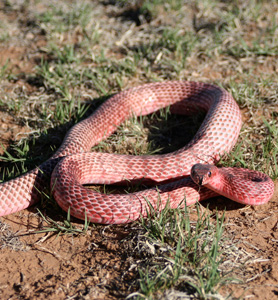**If you are at all unsure whether the snake is venomous or not, do not attempt to handle or move the snake. Call your local animal control services first so they can place the snake into a secure container for transport to a licensed rehabilitator**
- Injured? Snakes are most often injured by cats, dogs, and cars.

If you find an injured snake:
- Call a licensed wildlife rehabilitator.
- Use a stick to move the snake instead of your hands.
- Gently slide it into a container with a tight fitting lid with small air holes. Pillow cases work well also.
- If the snake is stuck in a trap, netting, or glue/sticky paper, DO NOT ATTEMPT TO REMOVE IT. You may injure it further.
- Keep in a warm, dark, quiet place until transporting it.
- Transport it to a licensed wildlife rehabilitator.
- Healthy? If there is no obvious sign of injury:
- Leave it alone. It just wants some sunshine and will likely be moving on soon.
- Put pets inside until it has moved away.
- Moving snakes into unfamiliar territory may compromise their chances to survive.
- Don’t attempt to pick it up in case it is venomous.
- Snake in your home? Removing the snake is the first step.
- Call animal control to assist in moving the snake back outside or call a licensed rehabilitator if you have any questions or concerns.
- Do not touch the snake, use a long stick if you need to move the snake instead of your hands.
- Gently push it outside or into a container with a tight fitting lid to move it outside.
- After the snake is gone, animal proof your house to prevent any more animals to enter your home. Plug up any holes or other entrances. If this is not solved, another animal will just take its place.
Info:
http://wildlife.tufts.edu/found-wildlife/sick-injured-reptile-amphibian/snake/
http://www.humanesociety.org/animals/snakes/tips/solving_problems_snakes.html
https://nmpoisoncenter.unm.edu/education/pub-ed/upload_files/docs/venom_snakes_broc.pdf




